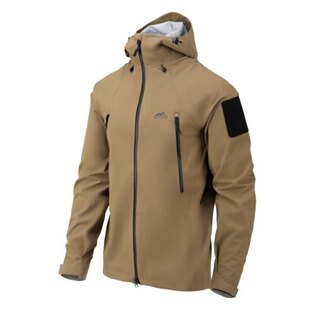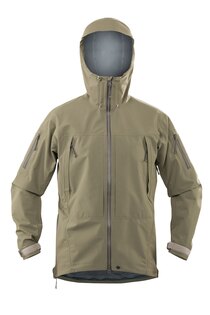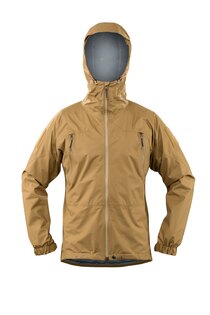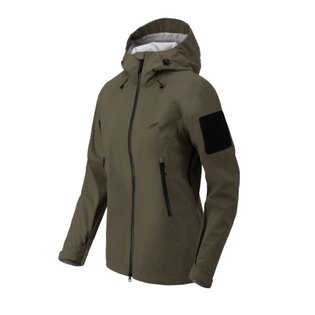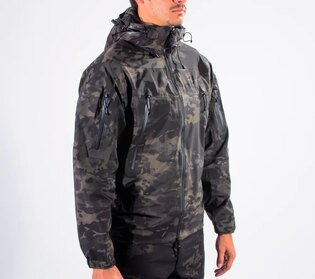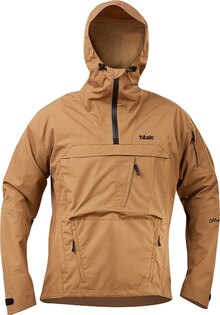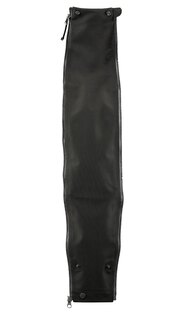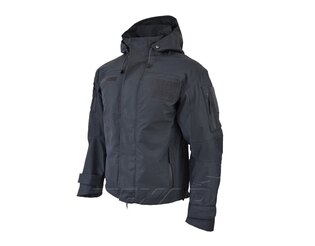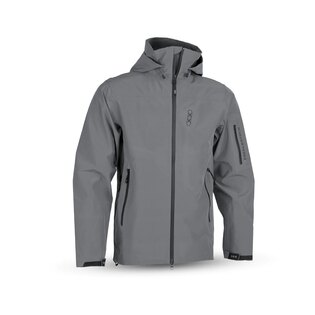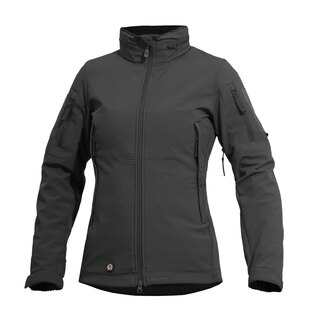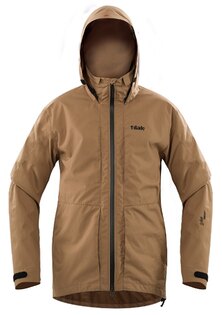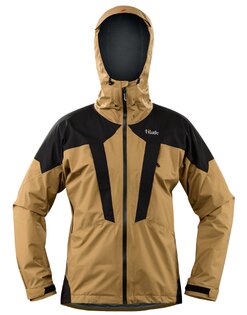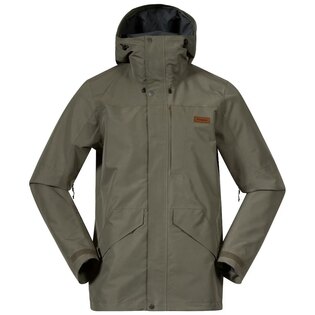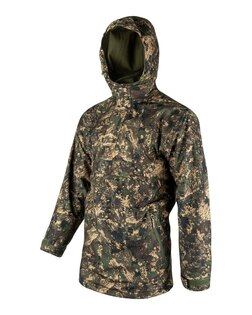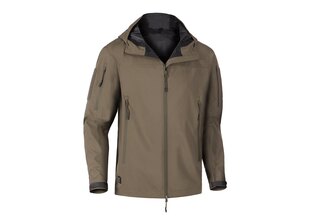Hardshell, softshell, or Gore-Tex?
Softshell, hardshell, or Gore-Tex? Three magic words that everyone who wants to enjoy treks and stays in nature to the maximum should know. We have prepared a guide to the world of functional clothing, which can save you a lot of inconvenience in nature.
Hardshell and softshell. What is the difference?
Hardshell and softshell are different from each other primarily by unique materials that ultimately determine, for example, the level of water resistance or breathability of the clothing. You reach for a hardshell especially during demanding stays in nature, when you need 100% protection from rain or wind. On the contrary, softshell is a lighter and more flexible variant that is suitable for less demanding treks.
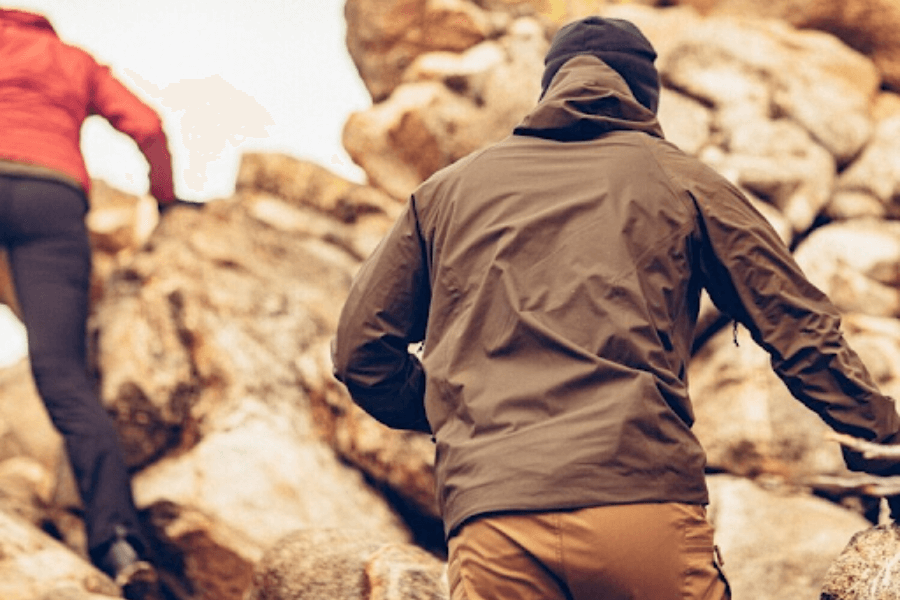
Hardshell and softshell differs from each other primarily by the material, which determines, for example, the level of water resistance or breathability of the clothing.
Hardshell
Snow, strong wind or huge rainstorm? No problem for hardshell">hardshell. Hardshell is strong and extremely durable upper layer, which protects you from bad weather. This type of clothing is mainly waterproof and windproof, at the same time, manufacturers strive for the highest possible breathability and the lowest possible weight. This combination makes the hardshell an ideal partner in demanding conditions, when you would simply not be able to cope with a softshell.
Windproof, waterproof, breathable and lightweight. These are the properties we have already mentioned in relation to hardshell. In connection with them, manufacturers also focus on special modifications that help improve functionality and ensure maximum comfort. The top layer of the jacket is usually supplemented with a DWR treatment, which takes care of the water repellency of the material. Drops of water thus flow away from the surface before you can feel them. The special ventilation holes in the armpit area are also worth mentioning. These help with thermoregulation during high loads and also in warm weather.
Softshell
Softshell is the quite the opposite of hardshell. It will serve you best when walking in dry weather. With some softshell jackets, you can withstand even a minor rain shower, but unfortunately, a larger downpour is beyond the limits of a softshell. The big advantage of the softshell is its breathability, which ensures maximum comfort when walking, jogging or cycling.
Breathability, elasticity and wind resistance. These are the most important features of a softshell. The perfect breathability makes it possible to use the softshell during running and active movement, during which the hardshell would be too clumsy. The elastic material ensures freedom and does not hinder the user's movement.
What to reach for then?
- Hardshell: Do you undertake demanding visits to distant and hard-to-reach places? Are you quite often surprised by a heavy rain shower, strong wind or a thick swirling snow on your way? Then you need strong protection in the form of a hardshell.
- Softshell: If you tend to go on shorter treks and in weather that is not rainy and extremely cold, then we recommend using a softshell. It will easily protect you from unpleasant wind and at the same time you are sure that you will feel comfortable in it and you will not have to deal with extreme heating or excessive sweating. The breathability of softshell clothing is one of the most important features that you simply cannot achieve to such an extent with hardshell.

Hybrid jacket combines elements of softshell and hardshell.
There is also a third option: a hybrid jacket
If you think that neither hardshell">hardshell nor softshell suits you and you need a hybrid, then we have good news for you. There is also a third option that combines elements of softshell and hardshell. Hybrid jackets are thus more breathable, softer to the touch and at the same time withstand even heavier rain or snow showers. But it is important to note that this combination is suitable for a center that cannot cover a softshell or a hardshell. We definitely do not recommend using a hybrid as a substitute for a hardshell in demanding natural conditions. Each design has its pros and cons, which are worth considering.
Gore-Tex
The Gore-Tex brand is most often found in outdoor clothing. The label itself is a sign of high breathability and strong protection against rain and wind. The basis of Gore-Tex clothing is an extremely durable membrane, the pores of which are 700 times larger than a vapor molecule and at the same time 20,000 times smaller compared to a drop of water. These properties of the membrane ensure the highest possible breathability and waterproofness. Wind resistance is also ensured by the membrane, which only allows an air volume of 5 l/m2 per second.
Gore-Tex most important properties
We have already covered the basic properties a bit above, for an overview we list the three most important ones, which make Gore-Tex very popular.
Water resistance
The heavy rain probably caught most of us by surprise already on the trip. But in order not to let the bad weather spoil the whole experience of being outdoors, it's a good idea to have Gore-Tex equipment with you, thanks to which you will not have to spend the rest of the trip in a wet clothes. The high-performance membrane protects you during difficult activities in extremely challenging conditions.
Breathability
The membrane ensures air circulation and fluid drainage. In other words: sweat flows out and air flows in. The sophisticated circulation ensures maximum comfort even during physically demanding activities.
Wind resistance
The air permeability of 5 l/m2 per second makes Gore-Tex an ideal companion even in very strong winds. The membrane makes sure you won't get cold. It literally shields your back from unpleasant wind.

Gore-Tex membrane ensures the highest possible breathability and water resistance.
Laminate construction
Gore-Tex is most commonly produced in double-layer and three-layer construction. But there is also another variant, the so-called Z-liner.
Double layer laminate
In this type, the membrane is laminated to the upper fabric. On the inside, a loose lining protects it from damage. This type can be used for a wide range of outdoor activities, so it is highly versatile. An important component is the loose-fitting lining, which ensures high wearing comfort.
Three layer laminate
The membrane is laminated between the upper material and the lining. The tight connection of all layers ensures perfect protection against damage. The three-layer construction prevents friction, thus prolonging the life of the product.
Z-liner
In this case, the membrane is connected to a lightweight fabric. A protective lining is loosely placed between the outer fabric and the lining, thanks to this construction the number of seams is reduced, giving the manufacturer more freedom.
What to watch out for
Keep in mind that no matter which option you choose, you need to take proper care of your clothes. We therefore recommend that you regularly and gently remove dirt, that can impair the proper functioning of the clothes over time. This is because dirt helps to retain moisture, which is then responsible for the breakdown of the individual components. Regular renewal of the waterproof layer is also essential to ensure maximum protection. For this purpose, it is a good idea to use an impregnating spray recommended by the manufacturer.
Readers are further interested













































































